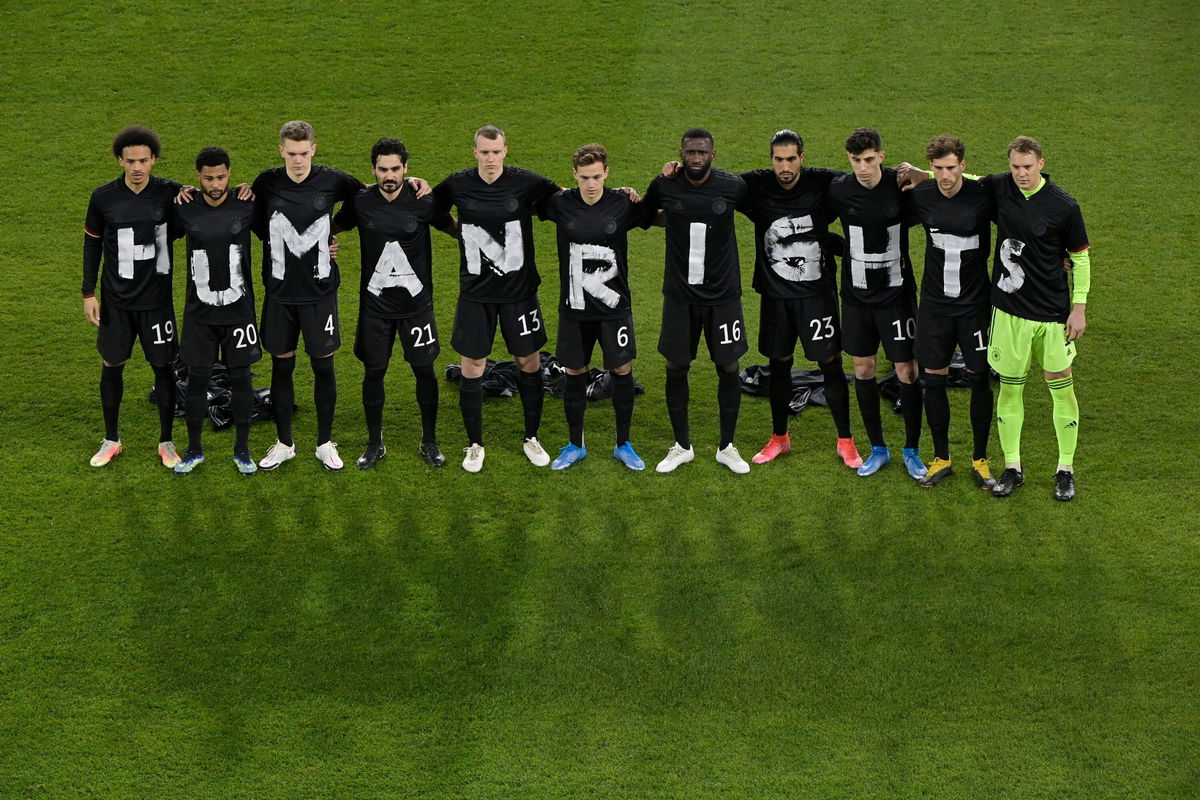Ras Abu Aboud stadium: The World Cup venue designed to be torn down

By Zeena Saifi, CNN
It was once a quiet waterfront, only enjoying the occasional sounds from the nearby Gulf shores. Now, it’s a dizzying burst of color and life — soon to be filled with up to 40,000 screaming fans.
It is Qatar’s Ras Abu Aboud stadium — the first built in World Cup history that was meant to be torn down.
Molded out of 974 shipping containers atop Doha’s port, the Ras Abu Aboud will host seven matches up to the quarterfinals of the 2022 World Cup.
All the containers are made from recycled steel, and the number — 974 — symbolizes Qatar’s dialing code.
It’s both a symbol of the country’s sustainability pledge and a reflection of its identity.
After the tournament is over, many parts of the arena — including all the removable seats, containers and even the roof — will be dismantled and repurposed for use in other sporting or non-sporting events, either inside or outside of Qatar.
“The 40,000-seater venue can be dismantled in full and transported to be built again in a different country; or you could build two 20,000-seater venues,” Mohammed Al Atwan, project manager for Ras Abu Aboud told CNN.
“Really, all parts can be donated to countries in need of sporting infrastructure. This is the beauty of the stadium — the legacy opportunities are endless.”
Along with the opportunities he says it offers, Qatar is hoping the stadium will be a trailblazer for future football tournaments.
READ: World Cup 2022: Qatar is ready as it strongly contests accusations of workers’ rights abuses
Sustainability challenge
A FIFA report in June estimated the 2022 World Cup to produce up to 3.6 million tonnes of carbon dioxide, that’s 1.5 million tonnes of CO2 more than the 2018 tournament in Russia created.
Nonetheless, the Gulf state is committed to delivering a carbon-neutral World Cup through offsetting emissions — before, during and after the event.
Organizers have promised sustainable building methods during the construction of the tournament’s infrastructure, such as the Ras Abu Abboud stadium, adding that they have procured “building materials that maximize resource efficiency and reduce emissions, waste and impacts on biodiversity.”
READ: Euro 2020: Azzurri’s victory over England caps Italian football’s ‘renaissance’
The SC says it is committed to keeping sustainability a main focus throughout the tournament — an example of this is planting trees and plants around the World Cup’s infrastructure to mitigate greenhouse gas emissions.
The onus, however, isn’t just on the organizers. Qatar says it will give recommendations to attendees and participants of the tournament on how they can reduce their own greenhouse gas emissions, including from travel, accommodation and food and beverage.
Once the spectacle is over, Qatar says it will offset any emissions generated during the tournament through building two mega solar power plants over the following 10-15 years, and by proactively supporting sustainable and low-carbon events in Qatar and the region
The reusability of the stadium’s parts is a reflection of that effort.
“Sustainability and legacy have always been at the forefront of Qatar’s planning and preparations for the World Cup,’ said Al Atwan.
When coming up with the stadium’s design, Al Atwan said movability was the main consideration for choosing shipping containers as the building blocks.
Containers are designed to be transported, either by air or sea, but when joined together to form a whole, they transform into a sturdy structure.
That ended up reducing the waste created on site during construction, says Al Atwan, adding that the Ras Abu Aboud Stadium has set a benchmark for sustainable and green mega-sporting event infrastructure.
Unlike the other seven Qatar 2022 venues, Ras Abu Aboud’s temporary nature meant that fewer building materials were required, keeping construction costs down and shortening the time needed to complete it.
Construction on the 4.8 million square feet (450,000 square meters) site commenced in late 2017 and is scheduled for completion by the end of this year, according to organizers.
Cooling sea breeze
When a fan steps outside Ras Abu Aboud, they’re met by Doha’s West Bay skyline. So when the sun goes down, a symphony of color — exchanged between the shimmering skyscrapers on one side and the stadium on the other — reflects off the shores and lights up the city.
And that proximity to the water doesn’t only offer attractive views.
All of Qatar’s World Cup stadiums are equipped with highly efficient cooling systems that maintain a comfortable atmosphere regardless of the hot temperatures outside.
But Ras Abu Aboud doesn’t need one because it gets a natural cool breeze from the sea nearby.
“Post-2022, the redevelopment of the site could take many forms and its legacy plans are still being finalized. It could be redeveloped into a public green space or used for a mix of commercial and residential projects,” said Al Atwan.
“It’s prime location means it’s suited to many projects and has an exciting future,” he added.
That future is not only physical, Al Atawan tells CNN. “Mega-sporting events like the FIFA World Cup have the power to inspire, prompt innovation and push existing boundaries to achieve new levels of success.”
The-CNN-Wire
™ & © 2021 Cable News Network, Inc., a WarnerMedia Company. All rights reserved.